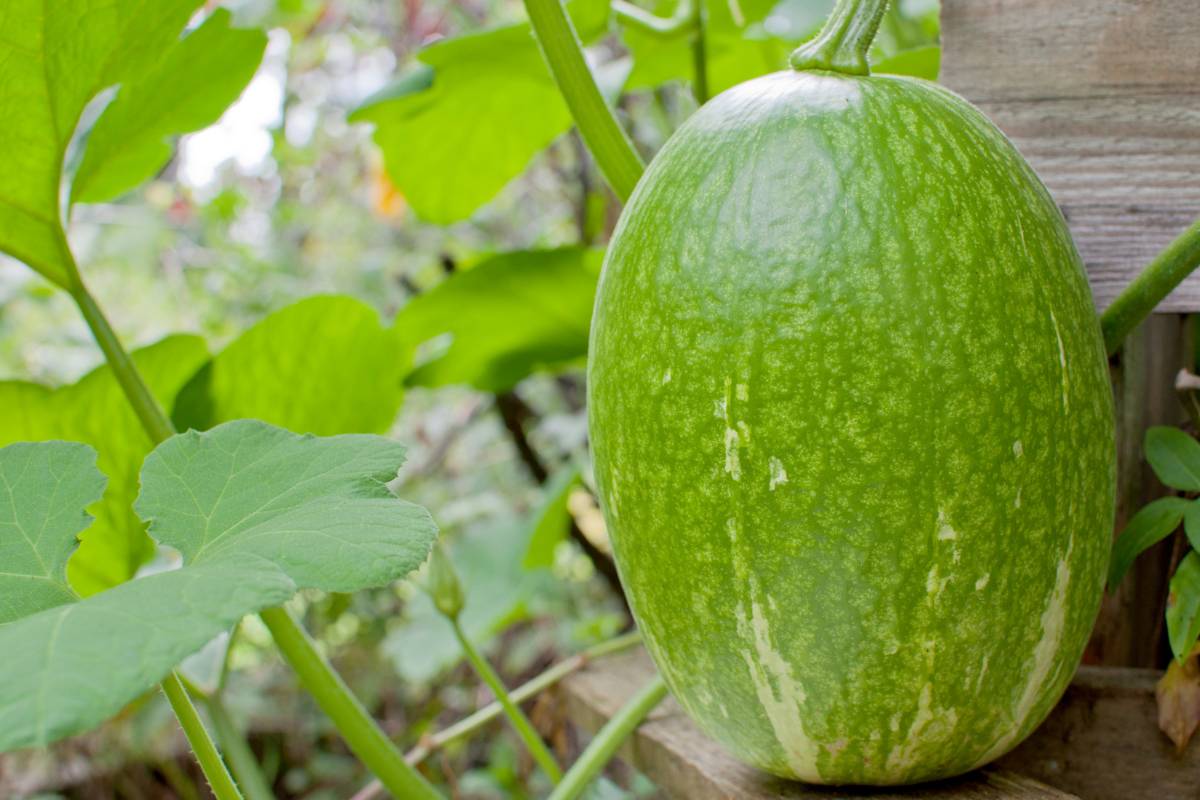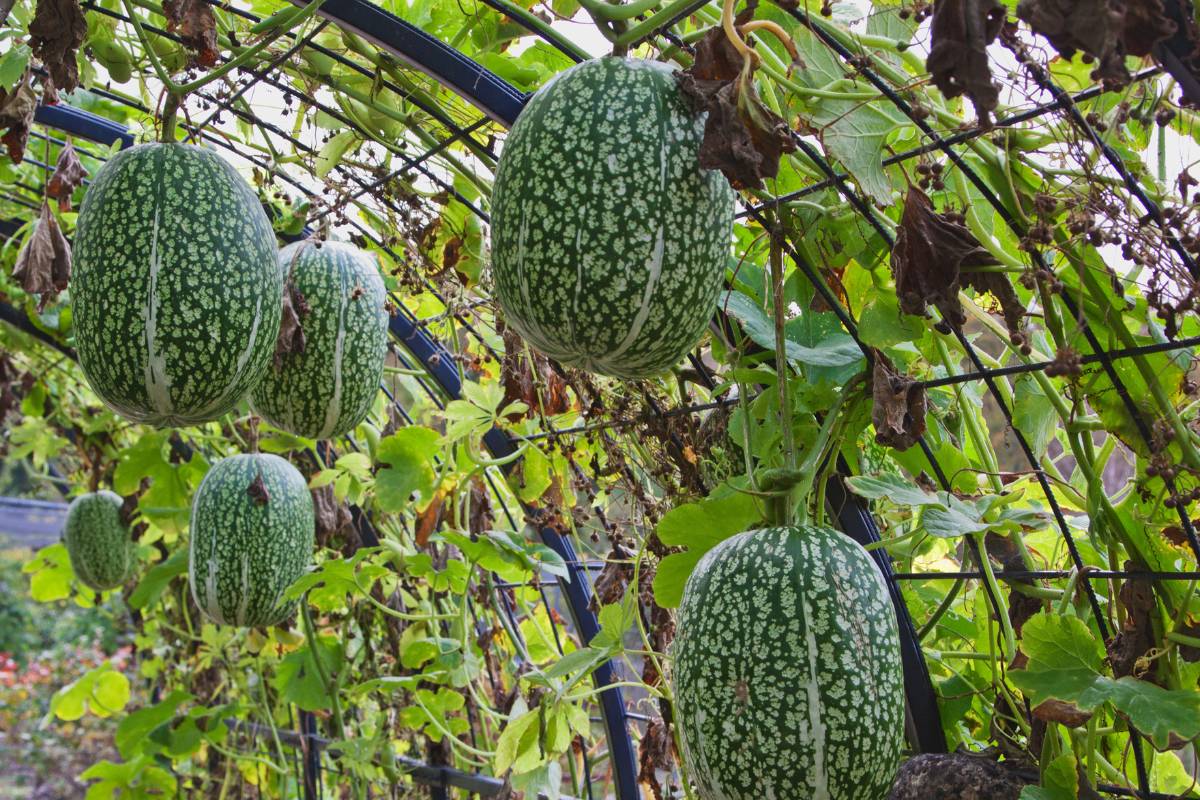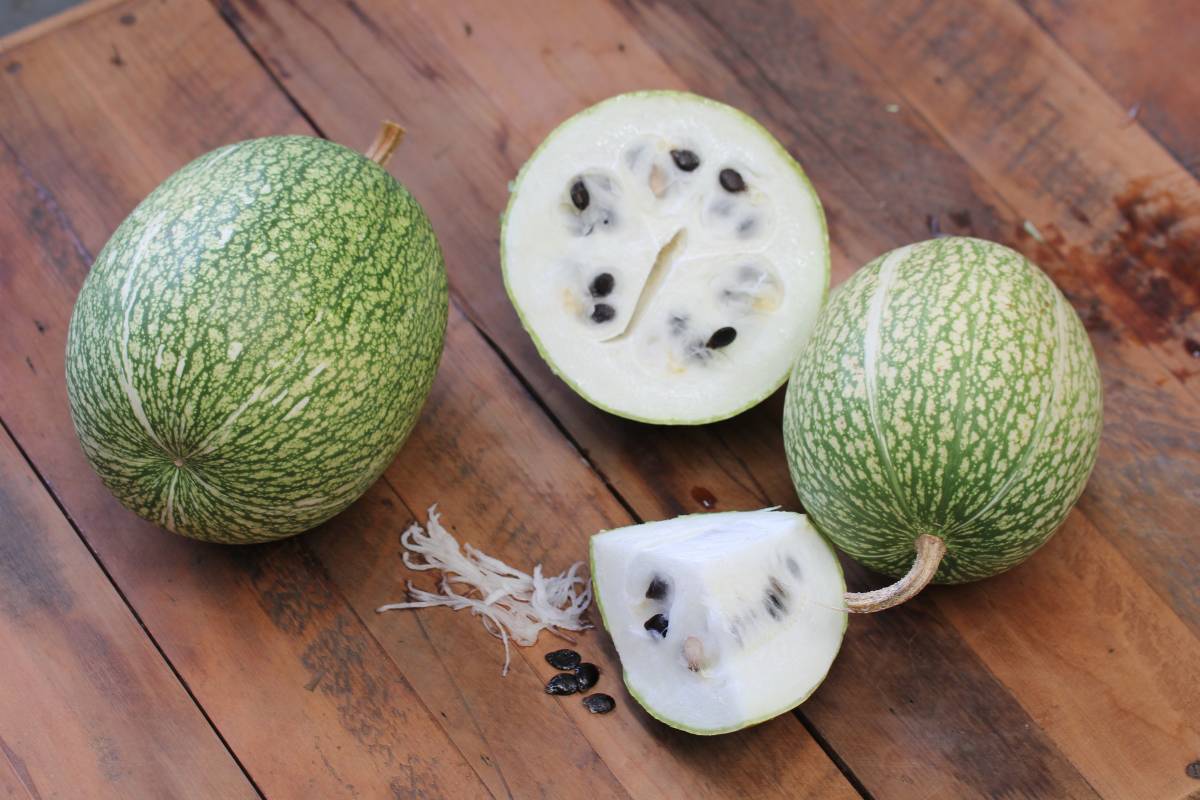Shark fin melon, or Cucurbita ficifolia, is a highly productive species of squash that can produce 50 or more fruits per vine per season. Its marine-themed name is taken from the texture of the cooked flesh, said to resemble the fin meat of those unfortunate sea dwellers who contribute to a certain famous soup. More prosaically, the fruit's flavour is similar to zucchini and other well-known squash varieties, meaning it can find a place in most kitchens.
The plant has its origins in South America, where it goes under the Spanish names Cidra and Chilacayote. It's also known as the fig leaf gourd (its leaves resemble a fig's in both shape and colour), seven year melon or Malabar gourd in various parts of the English-speaking world.
Shark Fin Melon in the Garden
The shark fin melon vine grows as a perennial in warm climates, reaching peak productivity from its second or third year onward. However, it can also be usefully grown as a frost-tender annual in colder climates.
The vines have similar growing requirements to other members of the melon family, namely a position in full sun, good drainage, plenty of water, and lots of nutrition available either through fertile soil enriched with compost and manure, or regular feeding.
The mature plant's productivity means it requires a lot of space. It's happy to either scramble across the ground or be tied to a strong support to make use of vertical space. If its size starts to get out of hand, careful pruning will help keep it under control, and you can use the trimmed younger leaves and stems as a leafy green.
Seeds can be sown direct from spring onwards in temperate and warm areas or earlier in hotter climates, well before the full heat of summer arrives. Sow seeds 1.5cm deep and space them 1m to 1.5m in all directions, water well, and germination should take seven to 14 days.
Young seedlings should be protected from pests, including aphids and birds. However, unlike many other cucurbits, shark fin melon has some resistance to powdery mildew, making it suited to humid subtropical and tropical climates.
Shark Fin Melon In the Kitchen
Mature shark fin melons could be easily mistaken for watermelons. Growing up to 20cm in diameter, the fruits have a skin that can vary from light to dark green with streaks or mottles of cream. Inside though, the flesh is creamy white and can contain several hundred black or dark brown seeds.
Once harvested, the gourds store very well in cool, dark conditions. They can potentially last for years once the outer skin is fully dry, which is certainly a bonus considering the exceptional productivity of a healthy vine.
When young, all parts of the plant can be eaten, including the leaves, stems and skin. However, as the fruits mature they develop a tough outer husk that needs to be removed before cooking. In older recipes, it's often suggested to drop the gourd onto the floor to crack it open, but a sturdy knife or cleaver will also do the trick (and may be less messy!).
Once the peel is removed, cut the flesh into chunks, and either boil, steam or microwave until tender before using in recipes. It has a mild, fairly neutral flavour that tends toward sweetness, letting it find a home in both savoury dishes and desserts. Some popular culinary uses include:
- It makes an interesting substitute for zucchini, providing a slightly stronger and sweeter flavour.
- It can be added to soups, stews and stir-fries to bulk them out without overpowering the other ingredients.
- As the name suggests, it can also be used in a vegetarian or vegan version of 'shark fin' soup, delivering a similar texture without the ethical concerns of the traditional dish.
- The shredded flesh can also be used as a meat or fish substitute in pasta sauces, where the mild flavour lets herbs and other flavourings take centre stage.
- Cabello de angel (angel's hair) is popular in Spain, where strands of cooked flesh are candied until golden then used to fill pastries.
- Dulce de chilacayote are candied pieces of melon that are given to visitors on the Viernes de Delores (Friday of Sorrows) in Mexico.
- The seeds can be cleaned and roasted in a similar way to pepitas (AKA pumpkin seeds) to make a crunchy, savoury snack.
If you like the mild flavour of zucchini then shark fin melon makes a less usual alternative in the veggie patch and kitchen alike. Its impressive productivity only adds to the reasons to give this gourd a try.









